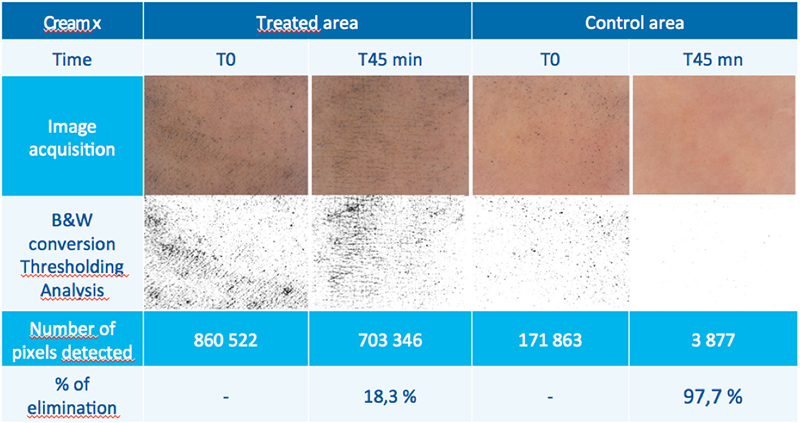Atmospheric pollution, coming from the industry, transportation, domestic activity, etc., primarily targets our skin as it is particularly exposed and offers an important and sensitive surface.
There is a wide variety of pollutants molecules, acting at different level into the cells, and these cell events may have different deleterious effects such as allergy, imperfections, skin pigmentation (lentigo), dull complexion, premature skin ageing, wrinkles, irritated skin and cancers.
The strategy that can be used to fight against pollution can be developed at three levels:
- the first one consists in stopping the pollutants at the level of the skin barrier, before they intend to reach the cells;
- then, it is also important to avoid the reactions on the surface of the skin, such as sebum peroxidation that produces toxics or lead to deleterious effects;
- and finally, a cosmetic product can act into the skin cells to prevent or correct metabolic reactions which are cited above and which could lead to adverse effects.
IDEA Tests Group developed solutions on those three levels of the antipollution topic and propose a panel of tests that can help for claims substantiation from the adhesion of pollutants directly onto the volunteers' skin to in vitro models, at the cells and molecular levels.
1. Skin barrier test on volunteers
We first evaluate the anti-pollution efficacy of cosmetic products against a deposit of carbon micro-particles, used as a model of pollution to fine particles.
This evaluation is done by image analysis on standardised photos. For a skincare product, after a pre-treatment with the sample, particles of carbon are deposited onto the forearm.
A first image acquisition is performed with the C-Cube camera (Pixience SAS), then a standardised rinsing protocol is carried out with water and a second image acquisition is performed.
The picture below shows the result for a skincare product. We can obtain a 97.7% of particles removal after 45 minutes of treatment. A similar protocol was also developed for cleansing products.

2. Lipid peroxidation of sebum on volunteers' skin
We also propose tests to highlight, on both in vitro models and volunteers, the protection of a cosmetic product against lipoperoxidation of sebum under the effect of ozone.
Three levels of tests are proposed: in tubo test with artificial sebum, ex vivo test with natural sebum withdrawn from volunteers before treatment and in vivo test performed on natural sebum withdrawn from volunteers after treatment.
3. Activation of Nrf2 antioxidant pathway
Pollution is often leading to oxidative stress responsible for irritative and sensitive skin, redness and inflammation. In such an event one of the protective pathway that the cell is using is the Nrf2 antioxidant pathway.
The modulation of this pathway is therefore a good marker of a protective effect of a cosmetic product.
In order to develop a test in this way, we used the KeratinoSens cells primarily developed by Givaudan for immunotoxicology purpose to demonstrate a protective effect of a cosmetic product towards the oxidative stress generated by the naphthalene.
Conclusion
With these 3 levels of tests we can cover all aspects of the antipollution claims. This project is still on going in order to go deeper in molecular reactions and, particularly, a protective effect toward DNA damage due to urban dust, on reconstructed epidermis is under development.
For more information, please contact:
Frédéric NUNZI, PhD
Doctor in Cell Biology and Microbiology / Head of IDEA Lab
Eurotox Expert (Regulatory and in vitro Toxicology)
f.nunzi@groupeideatests.com
